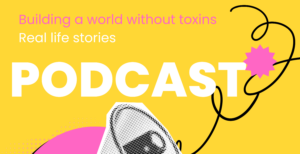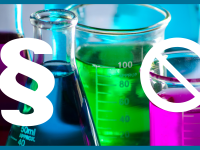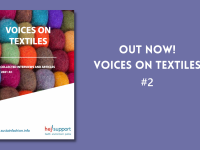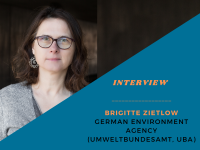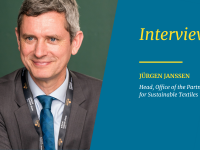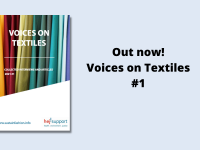Regulating PFAS as a Chemical Class in the Textile Sector

HEJSupport interview with Maria Delfina Cuglievan Wiese from the SAICM Secretariat
In 2009, at the second session of the International Conference on Chemicals Management (ICCM), “Perfluorinated chemicals and the transition to safer alternatives” was recognized as an issue of concern under SAICM. The decision has enhanced efforts on gathering and exchanging information on Per and Polyfluoroalkyl Substances (PFAS) and safer alternatives[1].
This class of chemicals includes at least 4,700 substances available on the market that are highly persistent in the environment and will take thousands of years to degrade. Also known as “forever chemicals,” PFAS have properties that make them heat-resistant, able to repel water, and nearly indestructible.
PFAS are man-made chemicals that have been used since the 1950s in industry and consumer products worldwide. Some of the uses of PFAS include providing stain- and water-resistant coatings on fabrics. When these products are disposed of in landfills, the PFAS contained in the waste is released into the air and groundwater. Manufacturing sites that use PFAS to make products can also be a source of pollution through emissions to the air, soil, and water.
The fact that all PFAS are very persistent or break down to very persistent molecular forms is the reason why this class of chemicals should be subject to restrictions. Within SAICM, the work on this issue of concern is now coordinated through a Global PFC Group supported by the OECD and UNEP in collaboration with United Nations Industrial Development Organization (UNIDO) and Stockholm Convention Secretariat.
The Group is focused on gathering and exchanging information on PFAS and supporting the transition to safer alternatives. The work to date includes:
–A web-portal has been developed for information exchange purposes www.oecd.org/ehs/pfc
–Synthesis paper has been published with four public webinars conducted in 2013 and 2014, on specific areas of the report;
–Development of a report on the range of risk reduction approaches;
–Data collection on global PFC emission figures is underway in order to ascertain where gaps and uncertainties lay in data collection measures and;
–Looking for alternatives to PFCs building on the work of the Stockholm Convention on persistent organic pollutants.
Because they are so toxic to the environment and human and animal health, some efforts have been made to phase out long-chain PFASs such as PFOS and PFOA. In 2009, PFOS was included in the list of the Stockholm Convention for global elimination, though many uses were exempted. In 2019, PFOA was also added to the list and some of the exemptions for uses of PFOS were closed. In 2019, the Stockholm Convention’s POPs Review Committee recommended the global elimination of toxic PFHxS (and 147 related substances), which was used by the fluorine industry as a replacement for PFOS and PFOA. This recommendation will be considered at the 2022 Conference of the Parties to the Stockholm Convention.
However, while production and use of PFOA and PFOS have dropped in the USA and Europe, they continue to be produced in countries such as China and India and to be applied to products in the global supply chain. Extensive PFAS contamination of groundwater resources has been found in Australia, North America, South America, and Europe. Investigations carried out in Bangladesh, India, Indonesia, Japan, Malaysia, Nepal, Sri Lanka, Thailand, and Vietnam indicate widespread PFAS pollution in Asia. The data presented in the report showed that textiles could be a significant source of PFAS exposure.
For many years, environment and health groups have been calling for these “forever chemicals,” which do not break down in the environment, to be regulated as a class, so that so-called “regrettable substitutions” do not replace one harmful chemical with another. Earlier this year, the SAICM Secretariat, in partnership with the Natural Resources Defense Council (NRDC), published a policy brief “A review of PFAS as a Chemical Class in the Textiles Sector”[2] with an attempt to make the case for regulating PFAS as a chemical class. A detailed explanation about managing PFAS that way, especially in the textile sector is also provided in the NRDC report “Engaging the Textiles Industry as a Key Sector in SAICM: A Review of PFAS as a Chemical Class in the Textiles Sector”[3].
The report identifies that the chemical-by-chemical approach often taken within regulatory frameworks “appears ill-equipped to address the thousands of chemicals in this class. There may be a need for a more comprehensive approach, given the number of PFAS, their myriad uses, and the known and potential harms associated with this class of chemicals.”[4] The report specifically examines the class approach for PFAS as it applies to the textile sector, as it covers a wide variety of consumer products and is a priority issue in the SAICM framework.
Hazardous chemicals found in effluents from textile processing facilities include some chemicals known to cause cancer and disrupt hormonal systems in humans and animals. Toxic chemicals, such as alkylphenols and per- and polyfluoroalkyl substances (PFAS) are particularly problematic, as they cannot be removed by wastewater treatment plants.[5]
HEJSupport caught up with Maria Delfina Cuglievan Wiese from the SAICM Secretariat to get more details about the new brief.
- What was the motivation to prepare the policy brief?
Identifying PFAS as an issue of concern under SAICM has enhanced efforts on gathering and exchanging information on PFAS and supports the transition to safer alternatives. This work has been coordinated by the Global Perfluorinated Chemicals Group, which is supported by the OECD and the UNEP.
Applying the class approach to manage PFAS in the textile sector connects two important issues covered in the SAICM context. First, the textile sector is an appropriate choice given the environmental significance of the sector generally. Second, the quantity and the wide variety of PFAS uses within the sector also make it a priority for PFAS action. The textile sector’s globally spread value chain, which includes companies of all sizes, can also provide significant lessons for capacity building and enabling conditions that can later extend to other sectors.
- What is the aim of the brief?
The policy brief examines the scientific, policy, and practical reasons for approaching PFAS as a class. It also identifies enabling conditions for advancing improved public health and environment protection in the textiles sector, for consideration by SAICM and other stakeholders.
The report developed by Natural Resources Defense Council (NRDC) with the guidance of the SAICM Secretariat Engaging the Textiles Industry as a Key Sector in SAICM: A Review of PFAS as a Chemical Class in the Textiles Sector was used as the main source to develop the policy brief. The report gives a more in-depth explanation on the class approach for PFAS as it applies to the textile sector, which covers a wide variety of consumer products and connects two important issues covered in the SAICM context. The report also examines the scientific basis, and the practical and policy reasons for approaching PFAS as a class, and reviews relevant private sector commitments made regarding supply chain management. The report identifies enabling conditions for advancing improved public health and environment protection in the textiles sector for consideration by SAICM and other stakeholders.
- What is the main outcome?
Managing PFAS as a chemical class, especially in the textile sector, could be a more efficient and effective approach to reducing their harm to human health and the environment. This approach is relevant for both the public and private sectors when developing policies and regulations and taking action to eliminate PFAS chemicals. As a result of the extreme persistence and associated risks of PFAS, it is critical to take action.
The study identified several opportunities for stakeholders to effectively eliminate new and contain existing PFAS contamination. These include eliminating non-essential PFAS production, uses, and prohibiting analogous exports to the developing world; promoting research and development on safer alternatives for uses currently deemed essential; improving and expanding global access to testing methods, and strengthening collaboration among actors in the textiles value chain.
- Were there any reactions to the policy brief from a government or a textile company?
The study is a useful contribution to the growing body of knowledge on PFAS management. It has been well received by the governments and textile companies.
[1] Perfluorinated Chemicals | SAICM Knowledge
[2] PFAS as a chemical class in textiles.pdf (saicmknowledge.org)
[3]https://saicmknowledge.org/sites/default/files/publications/SAICM%20report_PFAS%20in%20Textile_final_May%202021.pdf
[4]https://saicmknowledge.org/sites/default/files/publications/SAICM%20report_PFAS%20in%20Textile_final_May%202021.pdf
[5]ibid
